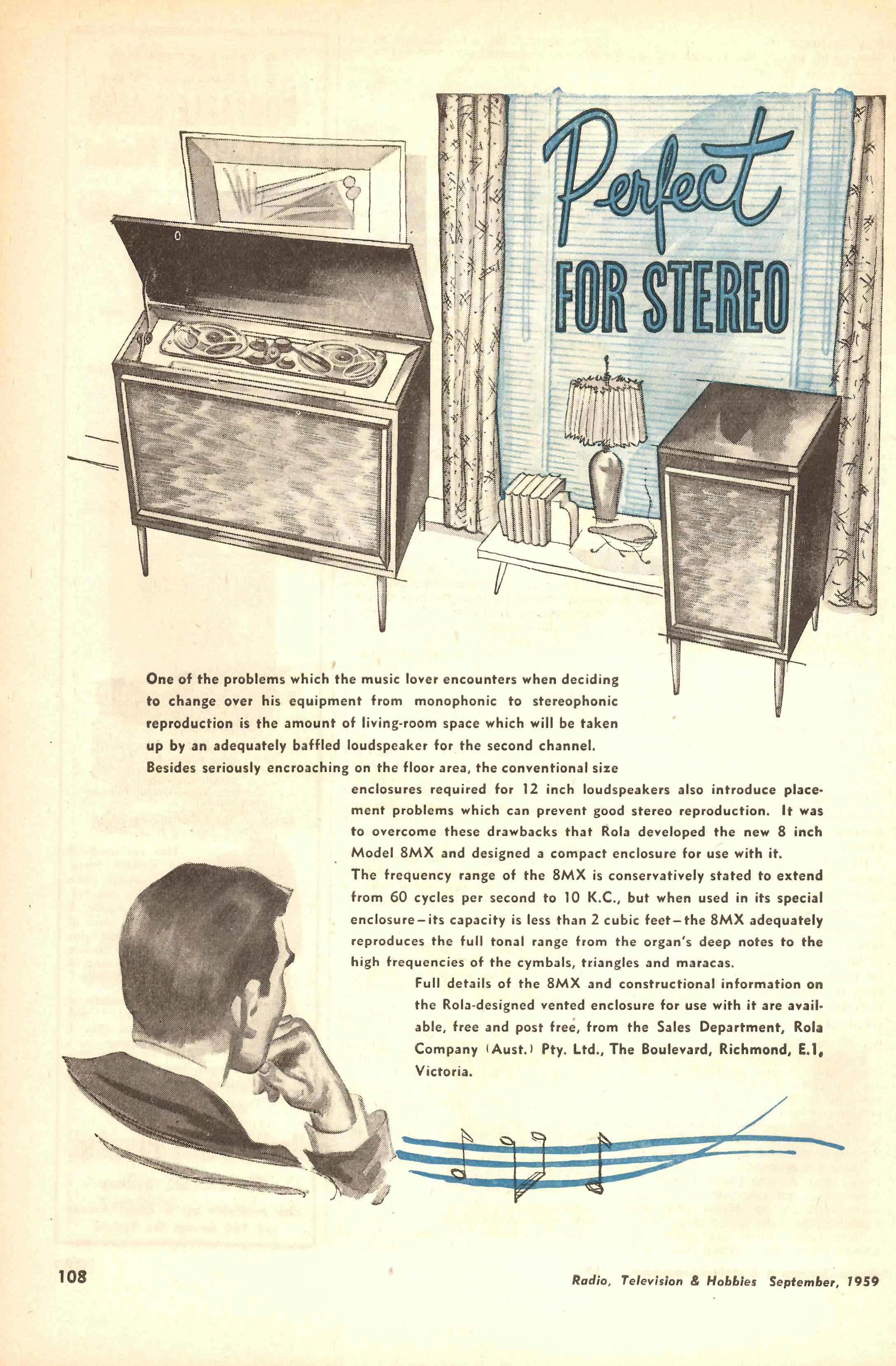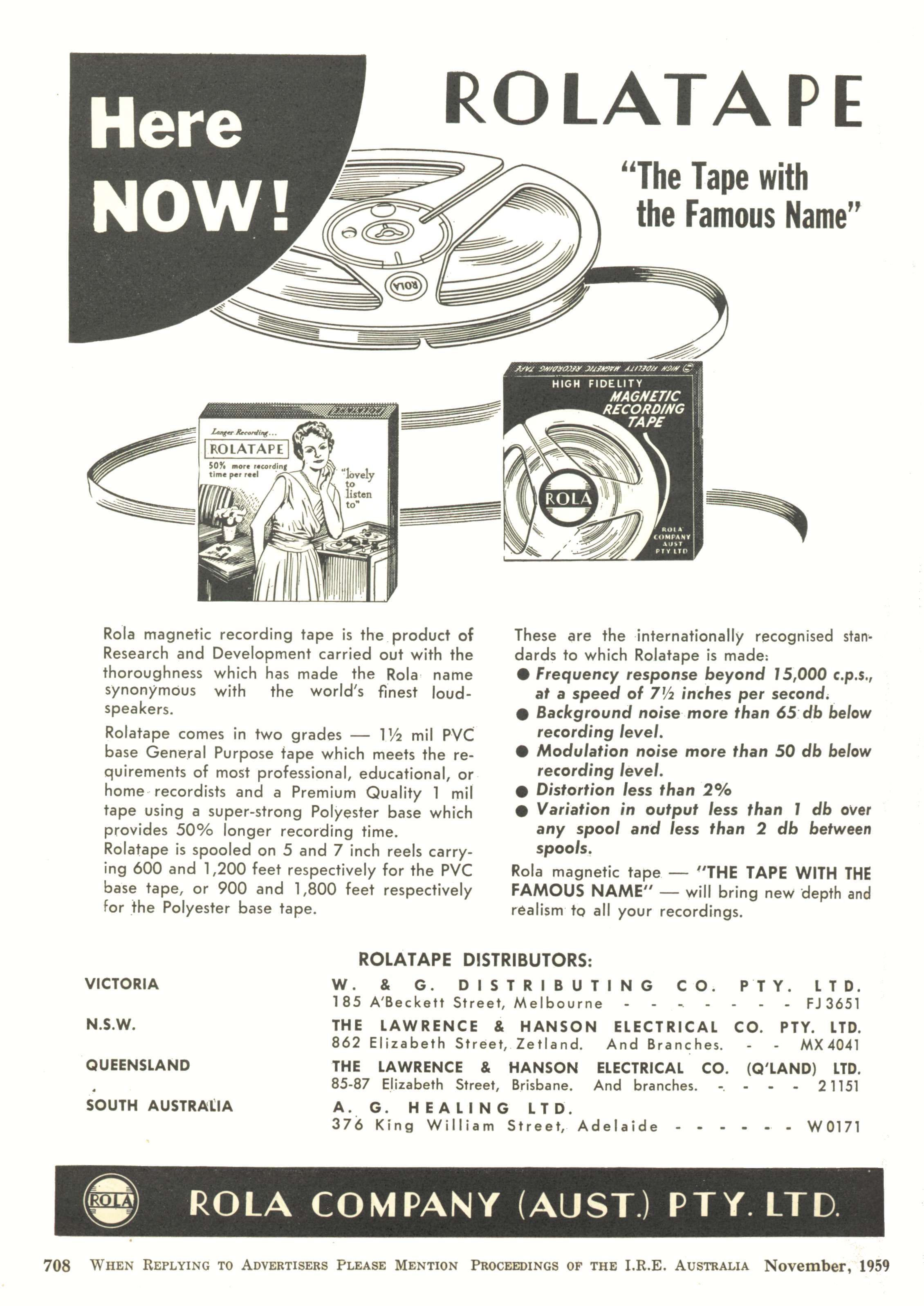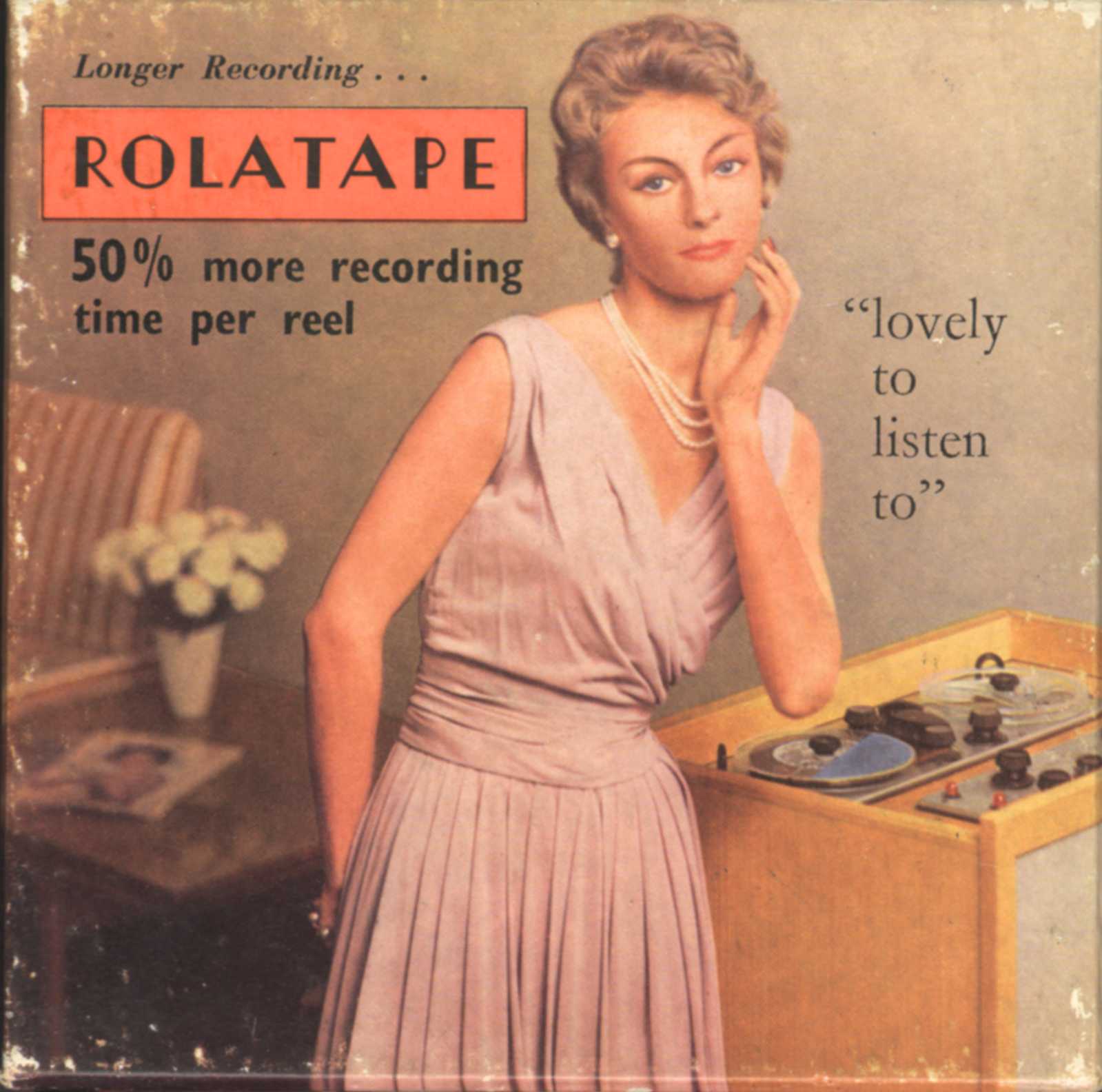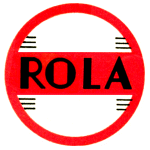Recently this interesting piece of equipment turned up, as can be seen on the panel it is labeled:
Stereophonic Sound System
BY BYER MAGNETIC RECORDER DIVISION ROLA COMPANY (AUST) PTY LTDThere doesn't appear to be model number but it has same Byer level meter as used in the 66Mk II tape machine, along with the same knobs, lamp bezels, and jack socket.
As you can see this is not in good condition and the panel has been butchered in the past but I'll go into more detail a bit later.
So far I've been unable to find any direct advertising material for this pre-amplifier or the complete equipment which this is just one component. Back in the late 1950's and early 1960's Rola used to advertise their loadspeakers and recording tape, in the advertising material the Mk II series tape transport was featured as part of an audio system pictured in a domestic setting.

Below in the advertisment for ROLATAPE the image on one of the tape boxes, while less promanent, there again appears to be a domestic version of a Byer/Rola 66 Mk II.

For many years I had never contemplated the notion that Rola had a purpose built tape based audio system for domestic use. As the advertising material pictured above was hand drawn artwork and I had thought that there was some artistic license used here with the inclusion of the Mk II series tape transports. As I have already said that I've never found any direct advertising material for this equipment I had assumed that it was just part of the fiction of advertising. A few years earlier the Twin Four (Australian built version of the Ampex F44) was supposed to be Rola's entry into the domestic tape recorder market but the deal with Ampex didn't go ahead and there was also never any published advertising for this product. The prototype Twin Four machine and advertising proofs which I acquired from John Hoehn some years ago are, I believe, all that now remains from that project. John was a design draftsman at Byer and Rola till the early 1960's.
A few years ago there was an ebay listing for number of reels of tape which I bid for and won. Some of these reels were in their original boxes and one box was the same type as shown in the advertisement for ROLATAPE. However, as you can see below the image from the front of the box is a photo not a line drawing as in the advertisment.

The equipment in photo looks to be genuine, not just faked for the photo shoot. Yes, it did happen even back then. Unfortunately, not much of the amplifier panel is visible in the picture but what we can see looks to be the same as the Stereophonic Sound System front panel. While there wouldn't have been many of these systems made I also don't think what we see in the picture is a mock up or fake because if it was set up just for the picture I would expect they would have just dropped in a 66 or 77 amplifier rather than build a special amplifier.
My belief is that this was designed for customers who wanted a good quality stereo system to play pre-recoded reel to reel tapes, the Philips compact cassette was yet to be invented. The fuction selector switch allows mono or stereo replay and mono only record. On close inspection of the tape box photo you can clearly see that the supply reel on the deck does indeed look like a commercial pre-recorded tape.
This next image shows the rear of the amplifier with the standard Mk II series four pin head connectors RED for record (1), BLACK for replay (2).
With the rear cover off, unlike other Byer/Rola products there is no screen printing to indicate tube numbers or types, no signal name next to the sockets, and no serial number label. This suggests to me that it is likely to have been one of a limited production run or a pre-production run, and/or possibly cost cutting. I would think it unlikely to be a prototype as the tube sockets and electrolytic capacitors are secured to the chassis with pop rivets rather than metal thread screws and nuts suggesting production build techniques. It is most likely that this was made by Zephyr Products as they did a lot of the contract manufacturing of eletronic assemblies for Rola.
Under the chassis the construction methods of point to point wiring with limited use of tagstrip mounting of components would suggest cost cutting. Component placement and mounting looks more like a domestic radio than the more professional looking build of the Mk II and Mk III amplifiers, the lack of chassis labels may also part of the cost reduction.
Finally for some speculation, we already know from this pre-amplifier unit that there was mono and stereo replay but only mono record so we should expect the tape transport to have mono erase and record heads while the replay head would be stereo (two track). Possibly the loudspeaker advertisment above is close to how these systems were configured, even down to the use of 8MX speakers. Further, it is quite likely that the cabinet housing the tape transport would have also contained a stereo power amplifier. If one or more of these amplifiers is still to be found and it isn't in a speaker enclosure then we need to know what to look for when trying to identify such a unit. It is likely to have two flying leads with four pin plugs for the left and right inputs, these would plug into the two sockets rear of the pre-amplifier shown above. As the tape transport has the mains input connection and power switch there would most likely be a cable on the power amplifier with an octal plug to connect to the tape transport, alternatively the plug may have been an eight pin Jones type as this has also be used in some Mk II series products. Then it is likely that a 8 pin Jones socket is located on the power amplifier to power the pre-amplifier we have here.
